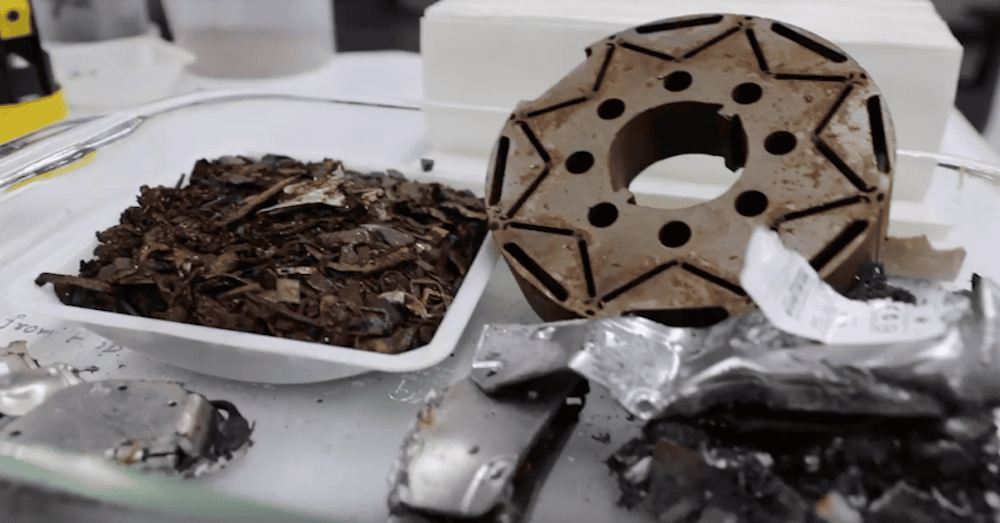
[Image above] Extracting rare-earth elements from e-waste can be difficult, but several methods in development could make the process easier. Credit: Oak Ridge National Laboratory, YouTube
The United States may be a global leader in science and technology, but what about raw material production? Not so much.
Of the 35 minerals or mineral material groups identified as critical to economic and national security by the Department of the Interior, the U.S. is 100% net import reliant for 14 of them, according to the United States Geological Survey’s Mineral Commodity Summaries 2019. These materials are just not critical to security—they are also critical to developing advanced technologies.
Amid the continuing trade war between China and the U.S., the U.S. Commerce Department is recommending steps to boost domestic production of rare-earth elements and other critical minerals to reduce reliance on foreign suppliers. And while many articles cover the mining aspect of domestic production, there is another way to boost domestic production—recycling.
Critical minerals are essential components of today’s electronic devices, like smartphones. With about 45 million metric tonnes of e-waste generated globally, that adds up to thousands of metric tonnes of critical minerals waiting to be harvested.
Yet extracting critical minerals from e-waste is rarely done, mainly because companies do not consider the practice economically feasible. In recent years, however, governments have started sponsoring research to develop economical recycling techniques.
The Critical Materials Institute (CMI) is an example of government-sponsored research. CMI, a Department of Energy (DOE) institute, was launched in 2013 “to develop solutions across the materials life cycle as well as reduce the impact of supply chain disruptions and price fluctuations associated with these valuable resources,” a DOE webpage describes. Led by Ames Laboratory, CMI brings together researchers from four national laboratories, seven universities, and 10 industry partners.
In 2018, researchers at the institute devised a method to extract rare-earth elements from discarded hard disk drives and turn them into new magnets for other uses. A CTT post that May describes the process.
This year, CMI researchers collaborated with scientists from other DOE offices to develop another way to extract rare-earth elements—and this method is set to be used for commercial production of rare-earth oxides.
In contrast to the 2018 recycling method, which involved crushing hard disk drive magnets into a powder and then spraying them with a plasma torch, the recent method involves dissolving magnets in nitric acid and then filtering the solution through polymer membranes that only let rare-earth elements pass through. The rare-earth-rich solution that comes out the other side is then processed to yield rare-earth oxides at purities exceeding 99.5%.
You can see the new method in action in this week’s video below.
The DOE researchers are working with Oak Ridge National Laboratory’s (ORNL) licensee Momentum Technologies of Dallas to scale the process further to produce commercial batches of rare-earth oxides. (In 2017, Momentum Technologies licensed ORNL’s 3D-printed magnet technology to produce a 3D-printed magnet made from recycled materials.)
“The goal is to recover hundreds of kilograms of rare earth oxides each month and validate, verify and certify that manufacturers could use the recycled materials to make magnets equivalent to those made with virgin materials,” the ORNL press release says.
With so many innovative methods for e-waste recycling being developed, hopefully we can soon begin reusing critical minerals in new electronic devices—and Olympic medals—on a large scale!

Credit: Oak Ridge National Laboratory, YouTube
Author
Lisa McDonald
CTT Categories
- Electronics
- Environment


